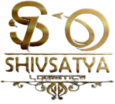Content

In general, US GAAP does not permit recognizing provisions for onerous contracts unless required by the specific recognition and measurement requirements of the relevant standard. However, if a company commits to purchase inventory in the ordinary course of business at a specified price and in a specified time period, any loss is recognized, just like IFRS Standards. With this order, the oldest crystals in stock, which were $6 each, were sold first, along with 65 crystals from the most recent purchase. After both of these purchases were completed, you were left with 35 crystals in stock, all valued at $5 each for a total value of $175. Learn more about the best accounting solutions for all business types and sizes by reading our review of the year’s best accounting apps and software.
- Understanding finances is an essential aspect of running a successful business, but the days of tracking numbers on nothing more than a wing, a prayer and a spreadsheet are long gone.
- Accounting software gives businesses a straightforward, affordable way to automate bookkeeping and accounting tasks, avoid costly errors and save energy on time-consuming financial tracking processes.
- Drop shippers don’t have anything that would be considered inventory as the third party supplier is the owner of the goods.
- Track costs, control billing, and manage time/expenses with multi-currency support and powerful financial reports.
- Suppose Lisa runs a beauty store and decides to purchase lipstick to sell to customers.
- For the most part, accountants use accountant-friendly software like QuickBooks or Sage Intacct to keep their books, though some third-party bookkeeping companies rely on proprietary in-house software instead.
Naturally, the more features your accounting software offers and the more users it supports, the more expensive your monthly bill will be. Most (though not all) accounting software providers offer multiple plans so growing companies scale up to heftier software plans as they grow. Ideally, accounting software should offer built-in integrations with other essential business software. Accounting software does more than track your finances and categorize your expenses for tax time. Together, these three accounting reports give you and any stakeholders in your business (like banks and lenders) crucial information about your business’s financial situation. Business owners, executives and shareholders use the information contained in these documents to maximize profits, minimize expenses and plan for a more profitable future.
IAS 2 — Inventories
You should consult your own professional advisors for advice directly relating to your business or before taking action in relation to any of the content provided. In this EOQ method, the company will get to know how much quantity of inventory should the company order at any point of time and when should they place the order considering the minimum level of inventory. Harold Averkamp (CPA, MBA) has worked as a university accounting instructor, accountant, and consultant for more than 25 years. What you will be left with is the final inventory figure to be included as a company asset.
One way to track the performance of a business is the speed of its inventory turnover. When a business sells inventory at a faster rate than its competitors, it incurs lower holding costs and decreased opportunity costs. As a result, they often outperform, since this helps with the efficiency of its sale of goods. Inventory refers to a company’s goods and inventory accounting products that are ready to sell, along with the raw materials that are used to produce them. Inventory can be categorized in three different ways, including raw materials, work-in-progress, and finished goods. Consignment inventory is the inventory owned by the supplier/producer (generally a wholesaler) but held by a customer (generally a retailer).
Scope of onerous contracts requirements is broader under IFRS Standards than US GAAP
After a physical inventory is completed, record the adjusting entries to the general ledger. Retain an electronic copy of the physical inventory along with the completed physical inventory reconciliations, and keep these copies available for internal and/or external auditors. This acronym stands for “generally accepted accounting principles”, which is a set of principles laid out by the Financial Accounting Standards Board (FASB). Inventory management is more than just knowing what’s been sold and what you’ve ordered. That missing inventory is generally assumed to have been damaged and dumped, or stolen. Remember that inventory is generally categorized as raw materials, work-in-progress, and finished goods.

You’ll need to carefully do your research, test drive a couple of top contenders, then choose an option that is reliable and easy to use. Rather than look at the cost of individual batches of units, you simply average the cost for the chosen accounting period. Going back to the clock factory example, you would end up with a COGS of $6.50 for the clocks you made on Monday and Tuesday.
Accounting inventory methods
To correct an overage, increase (D) the balance on the Inventory object code and reduce (C) the Inventory Over/Short object code in the sales operating account. To correct a shortage, reduce (C) the balance on the Inventory object code and increase (D) the Inventory Over/Short object code in the sales operating account. Record the cost of goods sold by reducing (C) the Inventory object code for products sold and charging (D) the Cost of Goods Sold object code in the operating account. Inventory accounting, or inventory management, plays an important role in business operations.
- When selling inventory and recording an accounts receivable, use an accounts receivable object code.
- US GAAP allows the use of any of the three cost formulas referenced above.
- Unlike US GAAP, inventories are generally measured at the lower of cost and NRV3 under IAS 2, regardless of the costing technique or cost formula used.
- Before you start shopping for software, it’s important to consider what you really want out of your accounting solution.
- Without sales the company’s cash remains in inventory and unavailable to pay the company’s expenses such as wages, salaries, rent, advertising, etc.
- There are many variables that inventory accounting deals with, from the movement of the stock, daily fluctuations in quantity, ageing inventory and deadstock, and so on.
Nonetheless, the inventory’s value is directly linked to the business’s revenue and overall income. Therefore, the stock itself is not income, but the value of the inventory is required for determining income. Multiplying this average cost by the number of items you have will tell you the rough value of your inventory. AVCO is a straightforward method, but it leaves out some detail and doesn’t work very well when there are big price fluctuations.
However, if you are in a service business that also has some inventory, it could impact you, too. Periodic inventory is better suited for small business accounting, while perpetual inventory is more suitable for companies with thousands of products and multiple retail outlets. The FIFO method is used for situations where the first units https://www.bookstime.com/articles/do-i-need-a-personal-accountant of your inventory are often the first ones sold. As an example, you have a clock factory and make 50 clocks on a Monday, and the cost is $7 per unit. The next day, you make 50 more clocks, though the cost goes down to just $6 each. If you were to sell 50 clocks on Wednesday, you would put the COGS as $7 per unit on the income statement.
In fact, it can make a significant difference both to business compliance and profits. Thus, the cost of goods sold is largely based on the cost assigned to ending inventory, which brings us back to the accounting method used to do so. There are several possible inventory costing methods, which are noted below. Computerized inventory systems can sometimes deliver this level of accuracy. They automatically count inventory as you order it, and subtract it when you sell it.
Perpetual Inventory system is most commonly used by businesses such as retailers with multiple outlets etc. With the Perpetual inventory system, all your product’s stock levels are updated automatically whenever a product is received or delivered to the customer. For the manufacturing industry, inventory is raw goods used in production, semi-finished products, and also the finished goods stored in the warehouse for sales. For example- For a bread manufacturer, inventory is bread flour, yeast, butter, etc. used in making bread dough.
